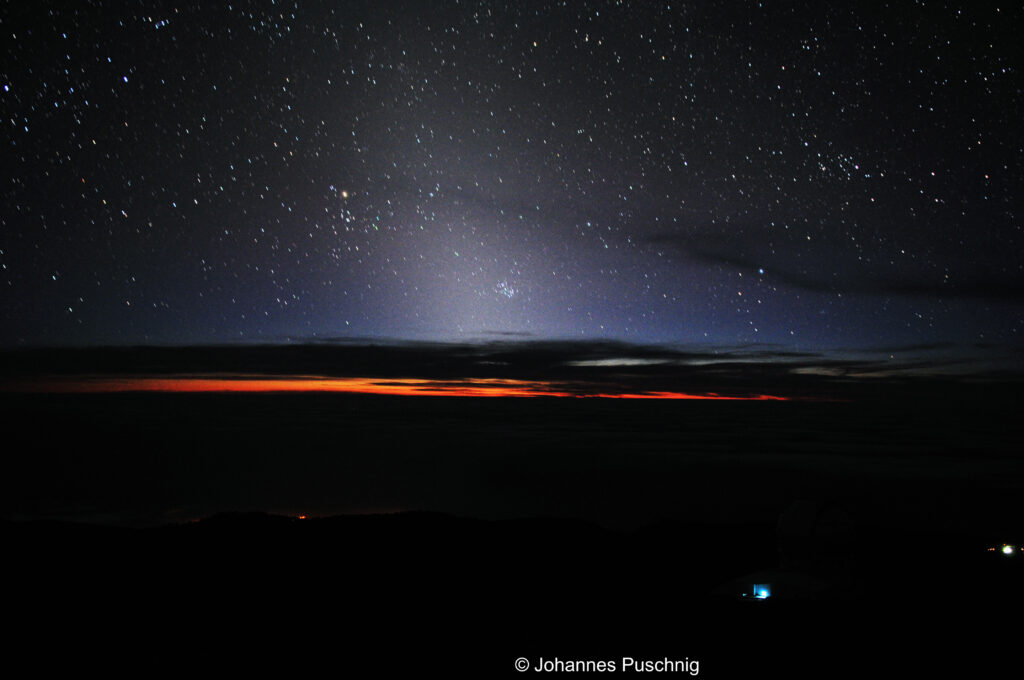Date published: 2018-04-16
Spotting the zodiacal light in spring
The zodiacal light is a nocturnal phenomena that is revealed only to those who dare to escape the city lights. In spring, after sunset and once twilight fades away into a dark and moonless night, a gentle luminous band opens up when looking towards west. Its majestic cone then seems to stand high above the horizon, as if it was trying to guide the observer. In fact, the zodiacal light directs us to the very beginning of the solar system, roughly 4.5 billion years ago, when our Earth and the other planets were formed from and within a circumsolar dust disk. Although the solar wind steadily sweeps away dust, new dust grains are formed through outgassing comets and minor planet collisions. Most of these objects orbit the sun in a relatively well defined and narrow plane, which is called the ecliptic, i.e. the plane of the Earth’s orbit. As a result, the ecliptic is continuously fed with fresh dust and gas, which causes the redirection of sun rays through reflection and scattering, which are then captured as zodiacal light by some enthusiasts on Earth. Although zodiacal light can be seen all year round, spring and autumn are best suited for observations from mid latitudes, because then the path of the sun crosses the horizon at a steep angle, making the twilight zone short.
It was in spring when I saw zodiacal light for the first time from the Roque de los Muchachos Observatory, La Palma, Canary islands, Spain (see picture below).

